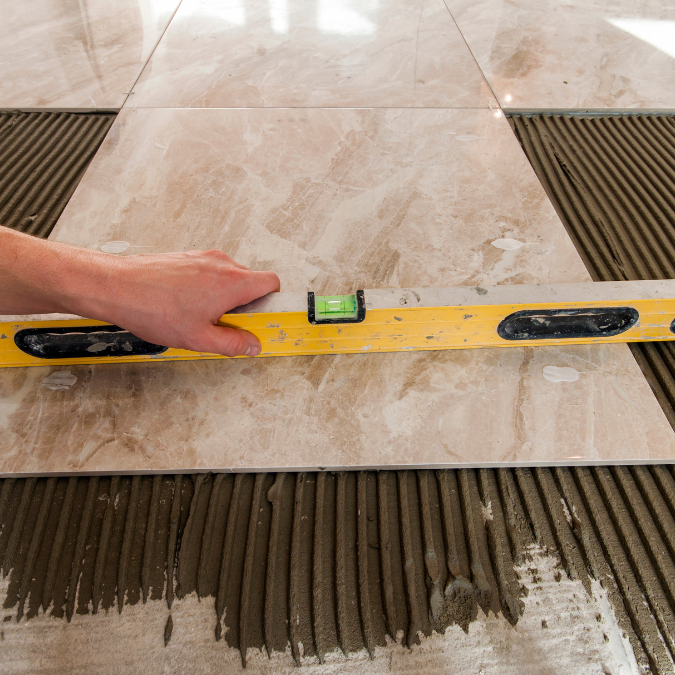The Art of Flooring Installation: A Comprehensive Guide
The Art of Flooring Installation: A Comprehensive Guide
Flooring installation stands as a pivotal milestone in the construction or renovation process of any given space. Whether one is embarking on the construction of a new residence, the renovation of office space, or the enhancement of a commercial property, the selection of the appropriate flooringmaterial and the caliber of the flooring installer themselves wield immense influence over the ultimate appearance, functionality, and durability of the floor. This comprehensive guide aims to provide an in-depth exploration of the realm of flooring installers, delving into the multifaceted roles they undertake, the diverse skill sets they command, and the overarching significance of their work in shaping the spaces we inhabit and utilize daily. From the careful selection of materials to the intricate techniques applied during installation, this guide will navigate the intricate world of flooring installation, shedding light on the expertise required to craft floors that are not just functional but also aesthetically pleasing and enduring.
What Does a Flooring Installer Do?
A flooring installer is a skilled professional responsible for the proper installation of various types of flooring materials. Their primary job is to transform a bare subfloor into a finished, functional, and aesthetically pleasing surface. Flooring installers work in both residential and commercial settings, offering their expertise in a wide range of materials, including:
| Flooring Type | Description |
| Hardwood | Installation of solid wood or engineered wood flooring. |
| Laminate | Installation of laminated flooring, often simulating the appearance of hardwood or stone. |
| Tile | Installation of ceramic, porcelain, or natural stone tiles for both floors and walls. |
| Carpet | Installation of wall-to-wall carpeting or carpet tiles. |
| Vinyl | Installation of vinyl sheets, planks, or tiles, which can mimic the look of various materials. |
| Concrete | Application of decorative concrete overlays or polishing existing concrete surfaces. |
The Importance of Flooring Installation
High-quality flooring installation is crucial for several reasons:
| Importance | Description |
| Aesthetics | Properly installed flooring enhances the overall look and feel of a space, contributing to its visual appeal and ambiance. |
| Functionality | The installation process ensures that the flooring material is laid correctly, reducing the risk of damage and creating a safe, level surface. |
| Longevity | Professional installation extends the lifespan of the flooring material, preventing premature wear and tear. |
| Warranty Compliance | Many flooring manufacturers require professional installation to maintain product warranties. |
Skills and Qualities of a Flooring Installer
Becoming a successful flooring installer requires a combination of skills, knowledge, and personal qualities:
| Skills and Qualities | Description |
| Technical Expertise | Flooring installers must understand the intricacies of the materials they work with, including how to cut, shape, and install them correctly. |
| Precision | Attention to detail is essential, as even minor mistakes can affect the final appearance and functionality of the floor. |
| Physical Stamina | Flooring installation often involves long hours of standing, kneeling, and lifting heavy materials. |
| Communication | Good communication with clients and other contractors is vital to ensure that the project runs smoothly and meets the client's expectations. |
| Problem-Solving | Flooring installers may encounter unexpected challenges during installation, and the ability to find solutions quickly is crucial. |
| Safety Awareness | Flooring installers must prioritize safety, both for themselves and those in the vicinity, by following proper safety procedures. |

Steps in the Flooring Installation Process
The process of flooring installation typically includes the following steps:
| Installation Steps | Description |
| Site Preparation | This involves cleaning and leveling the subfloor, removing any debris, and addressing any structural issues. |
| Material Selection | Choosing the right flooring material based on the client's preferences, needs, and budget. |
| Layout and Planning | Accurately measuring and planning the layout of the flooring material to ensure a seamless installation. |
| Cutting and Fitting | Precisely cutting and fitting the flooring material, often requiring specialized tools. |
| Installation | Properly adhering the flooring material to the subfloor using adhesives, nails, staples, or other appropriate methods. |
| Finishing | Installing transition strips, molding, or trim to achieve a polished look and protect the edges of the flooring. |
| Clean-Up | Thoroughly cleaning the installation area and removing all debris. |
| Inspection | Carefully inspecting the installation to ensure it meets quality standards and client expectations. |
Flooring Installer Specializations
Flooring installers may specialize in particular types of flooring or services:
| Flooring Installer Specializations | Description |
| Residential Installers | Focus on installing flooring in homes, including hardwood, carpet, tile, and laminate. |
| Commercial Installers | Specialize in flooring for commercial spaces, often working with materials designed for high-traffic areas. |
| Tile Setters | Experts in installing ceramic, porcelain, and natural stone tiles, often used in kitchens, bathrooms, and outdoor spaces. |
| Carpet Installers | Specialize in the installation of wall-to-wall carpeting, carpet tiles, and other soft floor coverings. |
| Wood Flooring Installers | Specialize in hardwood and engineered wood flooring, including intricate patterns and designs. |
| Concrete Finishers | Work with decorative concrete overlays, staining, polishing, and other treatments to create unique flooring surfaces. |
Tools and Equipment
Flooring installers use a variety of tools and equipment, including:
| Tools and Equipment | Description |
| Power saws and cutting tools | Used for precise material shaping during installation. |
| Adhesives, nails, staples, fasteners | Used for securing flooring materials to the subfloor. |
| Measuring and layout tools | Tools such as tape measures and chalk lines are used to measure and plan the layout accurately. |
| Safety equipment | Safety gear like knee pads, gloves, and eye protection to ensure installer safety. |
| Specialty tools for specific materials | Tools like tile spacers or carpet stretchers designed for specific flooring materials. |
Education and Training
Becoming a proficient flooring installer typically follows a well-rounded path that combines both formal education and hands-on training. Numerous vocational schools and trade programs recognize the importance of providing comprehensive instruction in flooring installation. These educational institutions offer courses that cover the essential aspects of the trade, including understanding various flooring materials, mastering installation techniques, and adhering to safety standards.
However, formal education is often just the starting point for aspiring flooring installers. To truly excel in this field, on-the-job training is invaluable. Many individuals embark on apprenticeships, where they work alongside experienced installers, gaining practical experience and refining their skills in a real-world setting. This hands-on experience allows them to put theory into practice, develop problem-solving abilities, and become proficient in handling various challenges that may arise during installation projects.
In this dynamic industry, where technology and materials continually evolve, a combination of education and practical experience ensures that flooring installers stay adaptable and up-to-date with the latest trends and techniques. Overall, the journey to becoming a skilled flooring installer involves a commitment to lifelong learning, as it is through this combination of formal education and real-world application that professionals become truly proficient in their craft.
Certification and Licensing
While not always mandatory, pursuing certification or licensure can significantly bolster a flooring installer's professional standing and open up greater career opportunities. Certification serves as a testament to an installer's expertise and commitment to high-quality workmanship, instilling confidence in clients and employers alike. One notable organization in this regard is the International Certified Floorcovering Installers Association (CFI), which offers comprehensive certification programs. Obtaining CFI certification not only demonstrates a flooring installer's competence in their field but also keeps them updated with industry best practices and evolving technologies. This, in turn, ensures that they remain at the forefront of their profession, capable of delivering superior results and meeting the rigorous demands of today's diverse clientele. Moreover, certified installers often enjoy a competitive edge in the job market, as many clients and contractors prioritize hiring professionals with recognized credentials, thereby making certification a wise investment for those looking to excel in the flooring installation industry.
Conclusion
Flooring installation is a vital aspect of any construction or renovation project, and flooring installers play a critical role in achieving the desired outcome. Their expertise, skills, and attention to detail ensure that the chosen flooring material is installed correctly, enhancing both the aesthetic and functional aspects of a space. Whether you're a homeowner looking to upgrade your floors or a construction professional seeking to understand the value of skilled flooring installers, this comprehensive guide sheds light on the art and importance of flooring installation.




